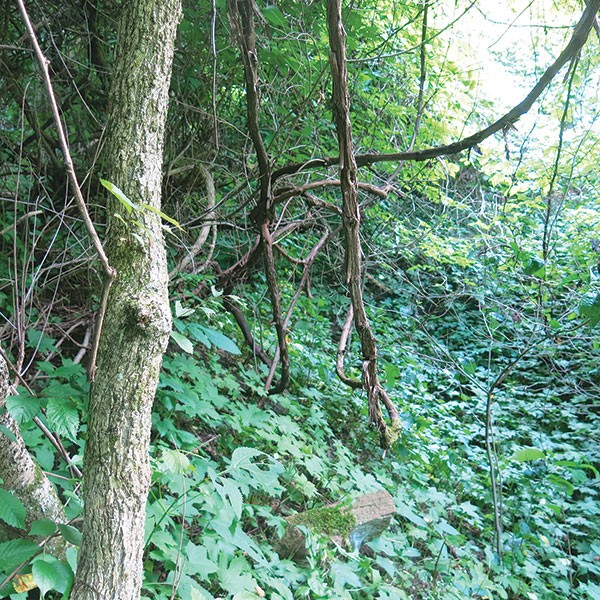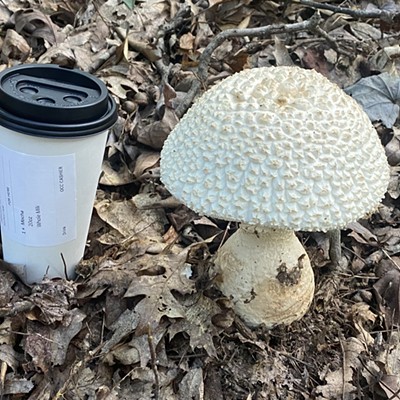What’s in store for Pittsburgh’s new public park?
“Our current goal is to leave it as pristine and natural as possible.”

Inside Hays Woods
In 2003, Heather Sage, a staffer for environmental group PennFuture, was fighting a new proposal to flatten Hays Woods, a 600-plus-acre urban forest in southeastern Pittsburgh. The property-owner, Pittsburgh Development Group II, wanted to build a casino, horse-racing track, 104-acre “town center” and upscale residential development; Pittsburgh City Council had approved the plan. To provide level ground, PDG also sought to strip-mine the site for coal, and fill stream valleys with the leftover soil.
Groups including PennFuture and the Sierra Club joined residents of the lightly populated Hays neighborhood in opposition; artists organized an exhibition Downtown to publicize the little-known site bordered by East Carson Street, Becks Run Road and Baldwin Borough. Sage wrote at the time that Hays Woods, which looms over the Monongahela River just four miles from the Point, was “a haven for wildlife” and “Pittsburgh’s last and largest undeveloped green space.”
Today, she recalls hiking there: “It’s kind of magical to be in a city as densely populated as Pittsburgh and also to be in some deep woods.”
Hays Woods might have been doomed. But in 2006, PDG lost its bid for Pittsburgh’s lone casino license, scuttling the project. And that December, the state Department of Environmental Protection denied the mining permit.
For years after, Hays Woods lay dormant. But last month, the story took a surprise twist when, after some 18 months of unpublicized negotiations, PDG principal owner Charles J. Betters sold Hays Woods to the city’s Urban Redevelopment Authority for $5 million. The price is a fraction of the land’s value, not even counting the $15 million Betters had invested in the abortive development. (The deal was finalized July 7.)
Thanks to the generosity of the very guy who wanted to pave them, those 660 wooded acres will now become the city’s newest, and largest, public park. Among those working to make that happen is Sage, now director of community projects for the Pittsburgh Parks Conservancy. That organization, along with the Western Pennsylvania Conservancy, the Allegheny Land Trust and representatives of the local foundation community, will be part of a working group that Mayor Bill Peduto is forming to study the site and plan for its use and preservation.
“The opportunities it poses are really historic,” says Sage.
It’s not unheard-of these days for major cities to receive huge windfalls of green space: In 2007, a quasi-governmental commission paid U.S. Steel $7 million for 1,200 acres of a forested former mining site in the middle of Birmingham, Ala. That land is now part of the 1,500-acre Red Mountain Park. But such transactions are very rare.
“So few cities actually have land left,” says Catherine Nagle, of the Washington, D.C.-based City Parks Alliance. Pittsburgh’s last new large park, Frick Park, opened in 1927.
Hays Woods is surprisingly pristine. Though laced with dirt paths (and apparently frequented by ATV enthusiasts), it’s minimally accessible, and some parts are too steep for much human use. But follow a deer trail inside and you might find a burbling creek (one of several streams there), a raspberry patch, or a dainty green spider at work. “The birds in the property are amazing,” says Sage.
But while iconic parks like Frick and Schenley are heavily landscaped (in accord with the design philosophy of their times), the plan for Hays Woods seems to be to leave it mostly alone.
“Our current goal is to leave it as pristine and natural as possible,” says Kevin Acklin, URA board chairman and Peduto’s chief of staff. The city will own the mineral rights, and be able to prevent drilling or mining there. Acklin says a small portion of Hays Woods bordering Baldwin might be reserved for new housing.
And in any case, this multi-year park-birthing process will leave plenty of chances for public input. “Community engagement is critical,” says Sage.
Among their ecological benefits, woodlands clean the air and water and manage stormwater. And opportunities for Pittsburghers to get outdoors will grow with the new park. So if the only changes at Hays Woods are some parking, toilets, signage and improved hiking trails, we’ll still come out ahead.
Groups including PennFuture and the Sierra Club joined residents of the lightly populated Hays neighborhood in opposition; artists organized an exhibition Downtown to publicize the little-known site bordered by East Carson Street, Becks Run Road and Baldwin Borough. Sage wrote at the time that Hays Woods, which looms over the Monongahela River just four miles from the Point, was “a haven for wildlife” and “Pittsburgh’s last and largest undeveloped green space.”
Today, she recalls hiking there: “It’s kind of magical to be in a city as densely populated as Pittsburgh and also to be in some deep woods.”
Hays Woods might have been doomed. But in 2006, PDG lost its bid for Pittsburgh’s lone casino license, scuttling the project. And that December, the state Department of Environmental Protection denied the mining permit.
For years after, Hays Woods lay dormant. But last month, the story took a surprise twist when, after some 18 months of unpublicized negotiations, PDG principal owner Charles J. Betters sold Hays Woods to the city’s Urban Redevelopment Authority for $5 million. The price is a fraction of the land’s value, not even counting the $15 million Betters had invested in the abortive development. (The deal was finalized July 7.)
Thanks to the generosity of the very guy who wanted to pave them, those 660 wooded acres will now become the city’s newest, and largest, public park. Among those working to make that happen is Sage, now director of community projects for the Pittsburgh Parks Conservancy. That organization, along with the Western Pennsylvania Conservancy, the Allegheny Land Trust and representatives of the local foundation community, will be part of a working group that Mayor Bill Peduto is forming to study the site and plan for its use and preservation.
“The opportunities it poses are really historic,” says Sage.
It’s not unheard-of these days for major cities to receive huge windfalls of green space: In 2007, a quasi-governmental commission paid U.S. Steel $7 million for 1,200 acres of a forested former mining site in the middle of Birmingham, Ala. That land is now part of the 1,500-acre Red Mountain Park. But such transactions are very rare.
“So few cities actually have land left,” says Catherine Nagle, of the Washington, D.C.-based City Parks Alliance. Pittsburgh’s last new large park, Frick Park, opened in 1927.
Hays Woods is surprisingly pristine. Though laced with dirt paths (and apparently frequented by ATV enthusiasts), it’s minimally accessible, and some parts are too steep for much human use. But follow a deer trail inside and you might find a burbling creek (one of several streams there), a raspberry patch, or a dainty green spider at work. “The birds in the property are amazing,” says Sage.
But while iconic parks like Frick and Schenley are heavily landscaped (in accord with the design philosophy of their times), the plan for Hays Woods seems to be to leave it mostly alone.
“Our current goal is to leave it as pristine and natural as possible,” says Kevin Acklin, URA board chairman and Peduto’s chief of staff. The city will own the mineral rights, and be able to prevent drilling or mining there. Acklin says a small portion of Hays Woods bordering Baldwin might be reserved for new housing.
And in any case, this multi-year park-birthing process will leave plenty of chances for public input. “Community engagement is critical,” says Sage.
Among their ecological benefits, woodlands clean the air and water and manage stormwater. And opportunities for Pittsburghers to get outdoors will grow with the new park. So if the only changes at Hays Woods are some parking, toilets, signage and improved hiking trails, we’ll still come out ahead.













